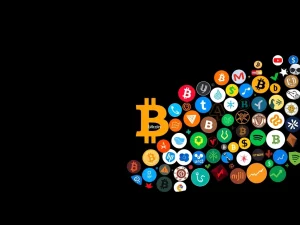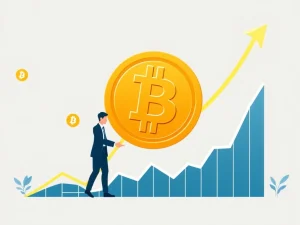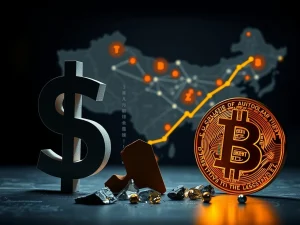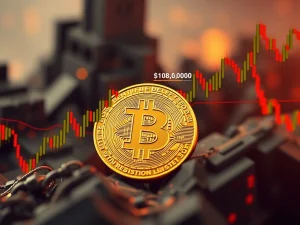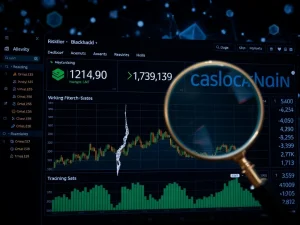Bitcoin Hard Cap: Can the Unbreakable 21 Million Limit Ever Change?
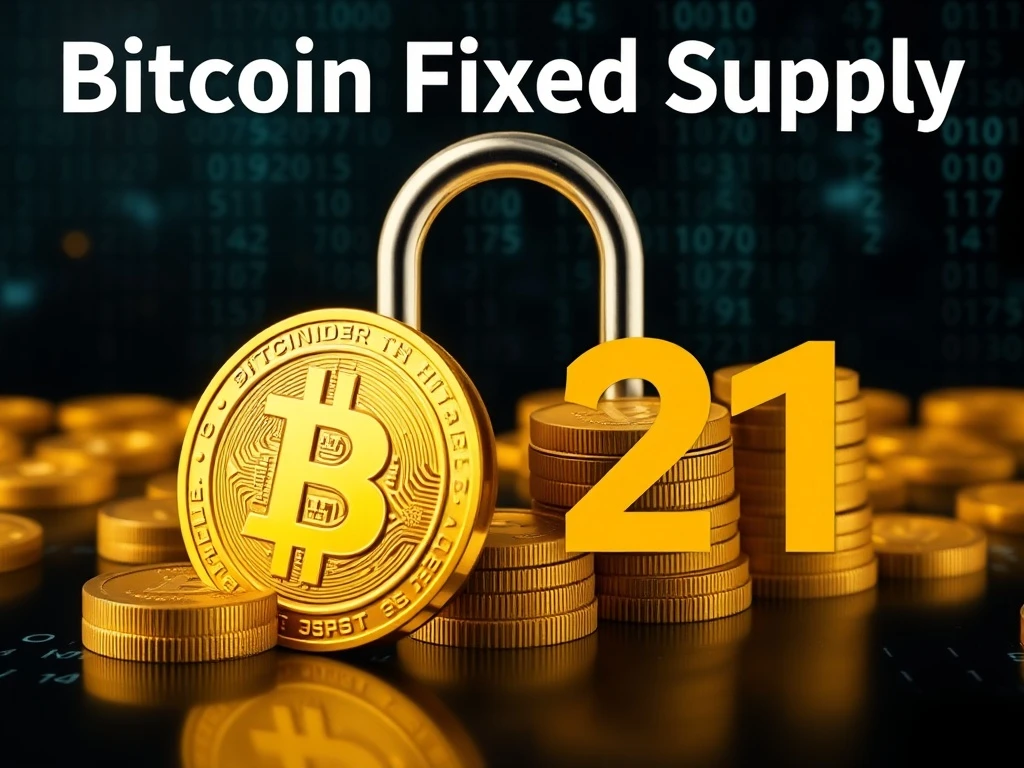
For anyone invested in the cryptocurrency world, a fundamental question often arises: Can Bitcoin’s core principles ever truly change? Specifically, many wonder about the Bitcoin hard cap. This 21 million coin limit is a cornerstone of its design. It establishes Bitcoin as a unique digital asset. But is this limit set in stone, or could it theoretically be altered?
Understanding the Bitcoin Hard Cap and Its Significance
A hard cap represents the maximum supply of a cryptocurrency. Developers hardcode this limit into the blockchain’s fundamental code. This strict ceiling on token creation promotes scarcity. Ultimately, scarcity can help boost the value of each token over time. Bitcoin (BTC) serves as a prime example. Its anonymous creator, Satoshi Nakamoto, established a 21 million Bitcoin supply cap. Regardless of demand or mining activity, the supply will never exceed this number. This design decision underpins much of Bitcoin’s appeal.
Why does a hard cap matter so profoundly? Absolute scarcity is a crucial concept in crypto. It positions Bitcoin as digital gold, yet it is even more limited. If demand increases, the price may rise. No new coins can be created to meet that demand. A cryptocurrency could only increase its supply by altering its core code. This would essentially mean reinventing itself. Consider gold: if mining became suddenly easier, the supply would increase, and its price would drop. Bitcoin avoids this issue due to its fixed, unchangeable hard cap. This makes its monetary policy highly predictable. Consequently, this predictability builds trust among investors.
The term “hard cap” also appears in initial coin offerings (ICOs). In ICOs, the hard cap signifies the maximum amount of money a project aims to raise. Conversely, the soft cap represents the minimum funds needed to launch the project successfully. The soft cap acts as a minimum fundraising goal. The hard cap serves as a stretch goal. ICO hard caps are usually higher, allowing for greater fundraising potential. However, reaching this target is not guaranteed. In both contexts—total supply or fundraising limits—a hard cap establishes clear boundaries. This promotes transparency and reinforces the principle of scarcity. Now, let’s delve deeper into Bitcoin’s 21-million hard cap. We will explore its importance and the potential implications if this cap were ever changed.
The Unwavering Importance of Bitcoin’s 21 Million Supply
Bitcoin’s 21-million hard cap ensures its scarcity. It functions as digital gold and a robust store of value. However, ongoing debates persist about whether it could ever be changed. Bitcoin’s hard cap of 21 million coins is fundamental to its very nature. It is akin to its DNA. This immutable characteristic makes Bitcoin the highly valued asset it is today. It provides the digital equivalent of gold’s scarcity. This scarcity is a major reason why many view it as a premier store of value. Bitcoin is also widely considered the apex asset within the broader cryptocurrency asset class. Yet, as Bitcoin evolves and its adoption grows, some observers have begun to ponder: Could this hard cap ever be changed? We must analyze this hot topic thoroughly.
Imagine if someone suddenly decided to print more gold. It would instantly lose its precious status, would it not? This reflects basic economics: supply and demand. As supply increases, perceived value typically decreases, and vice versa. The same principle applies directly to Bitcoin. Satoshi Nakamoto, Bitcoin’s mysterious creator, baked the 21-million hard cap into its foundational code. This gives Bitcoin its unique digital scarcity. Such a feature is exceptionally rare, especially when compared to traditional fiat currencies. Even other prominent cryptocurrencies, like Ether (ETH) and Solana (SOL), do not share Bitcoin’s distinct economic model. They lack the same fixed supply. Here is why this cap holds such immense significance:
- Store of Value: Bitcoin often earns the moniker “digital gold.” Like gold, it is scarce. There is a finite amount, and no entity can simply create more. This inherent scarcity is a monumental component of its value proposition.
- Decentralization and Trust: Unlike fiat currencies, where central banks can print money at will, Bitcoin’s supply remains fixed. This means no single authority can manipulate it for personal gain. This decentralization fosters unparalleled trust.
- Predictable Monetary Policy: Bitcoin’s supply grows at a completely predictable rate. This is thanks to the halving event, which occurs approximately every four years. This event cuts the mining reward in half. It progressively slows the creation of new BTC until the 21-million cap is finally reached.
As of early 2025, over 19.8 million BTC has already been mined. This leaves less than 1.2 million left to be created. This profound scarcity is a primary driver of Bitcoin’s value, which currently hovers around significant figures. The limited supply creates a powerful economic incentive.
Historical Debates and the Challenge to Change Bitcoin Limit
While the 21-million cap is a cornerstone of Bitcoin, past debates highlight the extreme difficulty of changing Bitcoin’s core rules. These discussions ranged from early inflation concerns to the intense 2017 block size wars. The 21-million cap is virtually sacrosanct within the Bitcoin community. However, some discussions about altering it have surfaced over the years. Let’s examine some of these historical conversations. In Bitcoin’s early days, some individuals questioned if an inflationary model might become necessary. The concern centered on miner incentives. Once all BTC was mined, miners might lose the motivation to secure the network. Satoshi Nakamoto, however, anticipated this. He proposed a solution: transaction fees. As block rewards diminish over time, fees would gradually become the primary incentive for miners. This foresight has proven remarkably robust so far.
Hal Finney, one of Bitcoin’s earliest adopters and arguably the first person to receive a Bitcoin transaction from Satoshi, once pondered the possibility of introducing a small amount of inflation after the 21-million cap was reached. Yet, he explicitly stated this was merely a thought experiment. It was never a serious proposal. In his own words, he envisioned Bitcoin becoming the world’s dominant payment system. Then, its total value should equal the total wealth in the world. Even so, Finney remained a steadfast proponent of Bitcoin’s inherent scarcity. His ideas underscored the theoretical nature of such discussions, not their practicality.
While not directly related to the supply cap, the block size debates of 2017 vividly demonstrated the immense difficulty in changing Bitcoin’s core rules. The community became deeply divided over whether to increase the block size. This disagreement ultimately led to a hard fork, resulting in the creation of Bitcoin Cash. If a relatively minor change like block size could cause such a profound rift, imagine the chaos that would ensue if someone attempted to alter the 21-million cap. Such an endeavor would face insurmountable resistance. It highlights the community’s strong commitment to the existing Bitcoin monetary policy.
The Dire Consequences of Altering Bitcoin Monetary Policy
Changing Bitcoin’s 21-million cap would shatter trust, trigger market panic, and almost certainly lead to a hard fork. History consistently shows the community fiercely protects its scarcity. Some in the crypto space have speculated that as Bitcoin adoption grows and mining rewards dwindle, pressure might mount to introduce a small inflationary mechanism. However, this would equate to attempting to rewrite the constitution of the largest crypto asset. The Bitcoin community is fiercely protective of its foundational principles. Any attempt to change the supply cap would undoubtedly face massive, overwhelming resistance. Still, it is a valuable thought experiment: What would happen if the hard cap were changed? Let’s explore this hypothetical scenario.
What if someone genuinely tried to change Bitcoin’s hard cap? The outcome would be disastrous. It would provoke a severe crisis of confidence. The consequences would be far-reaching and destructive:
- Loss of Trust and Credibility: Bitcoin’s entire value proposition rests upon trust. If the supply cap were altered, that trust would be fundamentally shattered. As investor and author Nassim Taleb wisely stated: “Bitcoin is the beginning of something great: a currency without a government, something necessary and imperative.” Tampering with the hard cap would utterly undermine that greatness.
- Market Reaction and Price Impact: Bitcoin’s price is inextricably linked to its scarcity. If the supply cap were increased, the market would likely descend into panic. We could witness a massive sell-off as investors lose all confidence in Bitcoin’s value. Remember, Bitcoin’s price has historically been driven by its fixed supply. Any alteration to that would be a seismic, catastrophic event.
- Hard Fork and Network Split: If a proposal to change the supply cap gained any traction, it would almost certainly result in a hard fork. The community would split into two distinct camps: those who support the change and those who adamantly oppose it. The outcome? Two competing versions of Bitcoin. However, history demonstrates that such forks rarely succeed in displacing the original chain. Consider Bitcoin Cash; it still exists, but it is nowhere near as valuable or widely adopted as Bitcoin itself.
Community and Consensus: Protecting Bitcoin Scarcity
The success of any change relies on broad consensus across key stakeholders. Bitcoin Core developers would need to endorse the idea. These individuals act as the guardians of Bitcoin’s principles. They are highly unlikely to support anything that undermines its core value proposition. Miners would also need to agree to the change. But why would they? Miners possess a vested interest in Bitcoin’s value. Increasing the supply would dilute their existing holdings and reduce their long-term profits. A counter-argument might suggest that if increasing the supply reduced mining difficulty, it could make Bitcoin mining more economical. This might potentially make miners more supportive of an increased supply cap. However, this remains a speculative argument, overshadowed by the immediate loss of value.
Even if developers and miners somehow agreed, the vast majority of node operators would also need to come on board. Nodes form the backbone of the Bitcoin network. They hold the ultimate say in which changes are adopted from a governance perspective. Without widespread node consensus, any proposed change would simply fail to propagate across the network. Another possibility worth considering involves large institutional Bitcoin holders like BlackRock and MicroStrategy. If they perceived benefits in increasing the supply through a fork and were willing to move capital at scale into the forked Bitcoin, that might potentially trigger the beginning of a meaningful alternative to the original Bitcoin. However, even with greater capital backing than previous forks like Bitcoin Cash, the community’s widespread acceptance remains absolutely crucial for any forked chain to become a meaningful Bitcoin alternative. The network effect and decentralized nature of Bitcoin make it incredibly resilient to such top-down changes.
Bitcoin’s hard cap is one of its most sacred principles. Its community fiercely guards this principle. As Andreas Antonopoulos, a renowned Bitcoin advocate, once eloquently stated: “Bitcoin is not just a currency; it’s a movement. It’s about taking control of your own financial destiny.” So, in theory, it is possible to change Bitcoin’s hard cap. After all, it is merely code, and code can indeed be rewritten. However, in practice, it is an entirely different story. Changing the hard cap would profoundly undermine that movement. It would also destroy the immense trust that has been painstakingly built over many years. Bitcoin’s 21-million cap is not just a number; it is a fundamental promise. The Bitcoin community fully intends to keep this promise. While the idea of changing the cap might make for an interesting thought experiment, it is highly unlikely to materialize as a credible alternative to Bitcoin. Bitcoin’s scarcity is here to stay, and that enduring scarcity is a significant part of what makes it so special and valuable.

